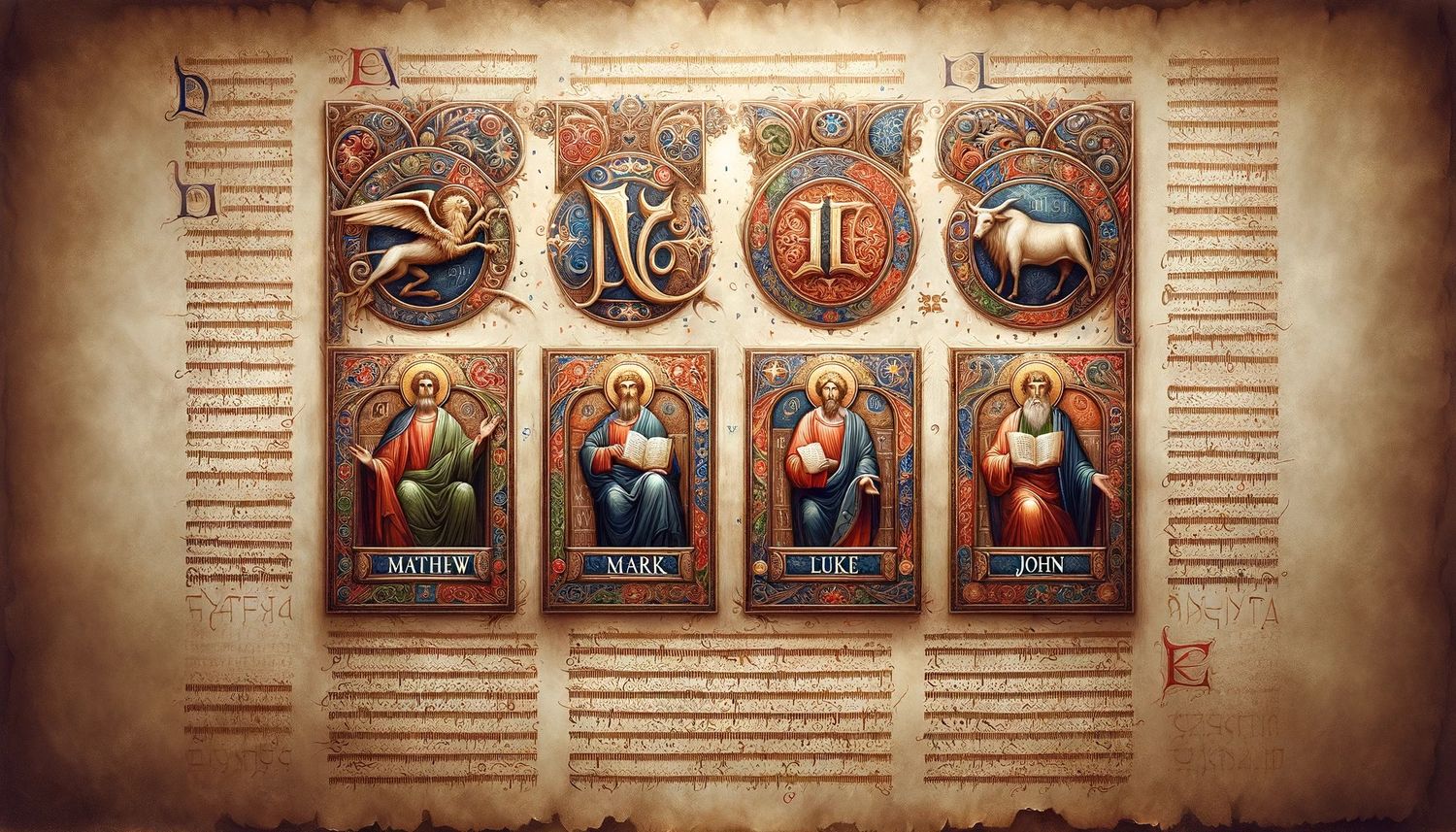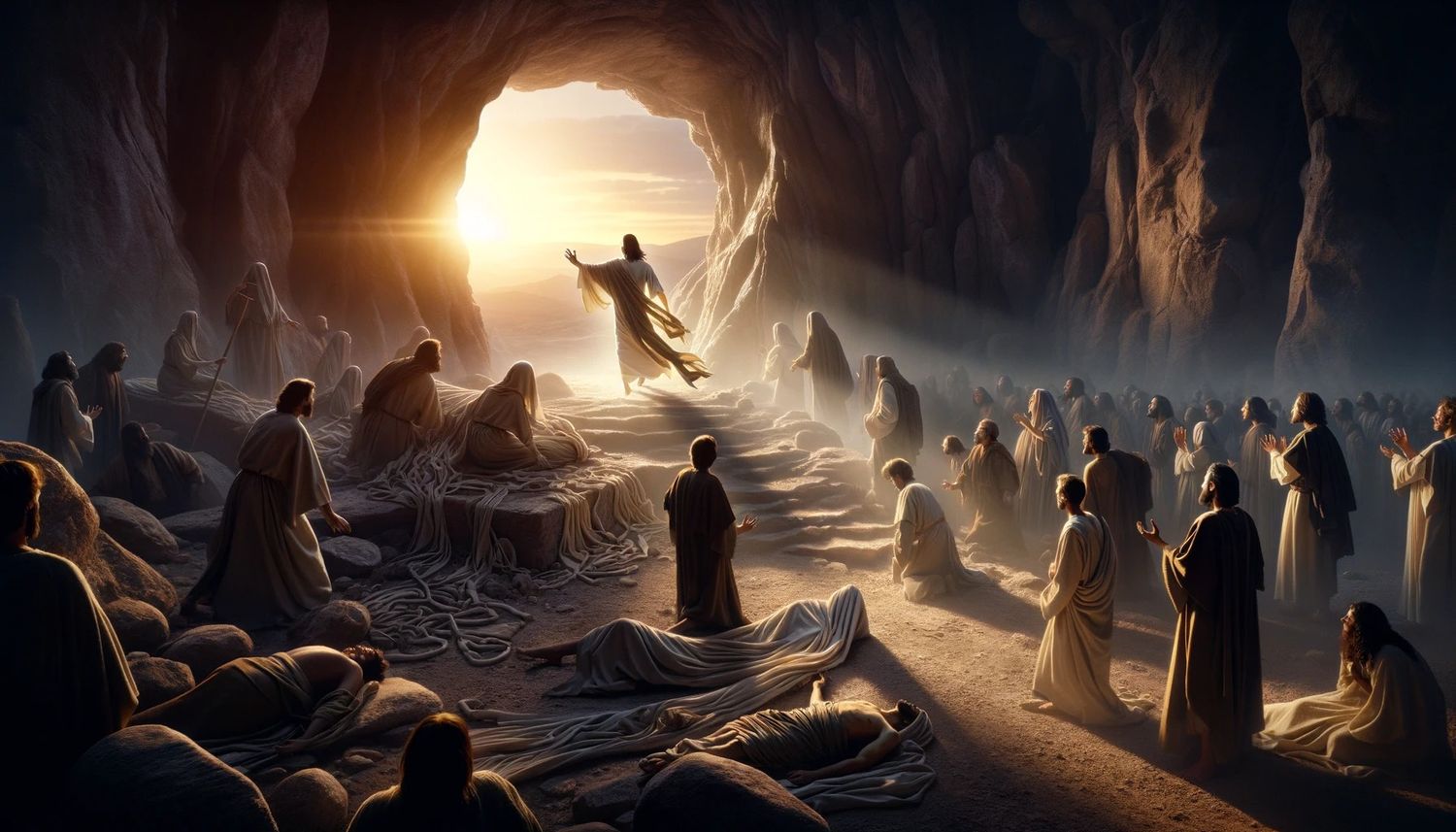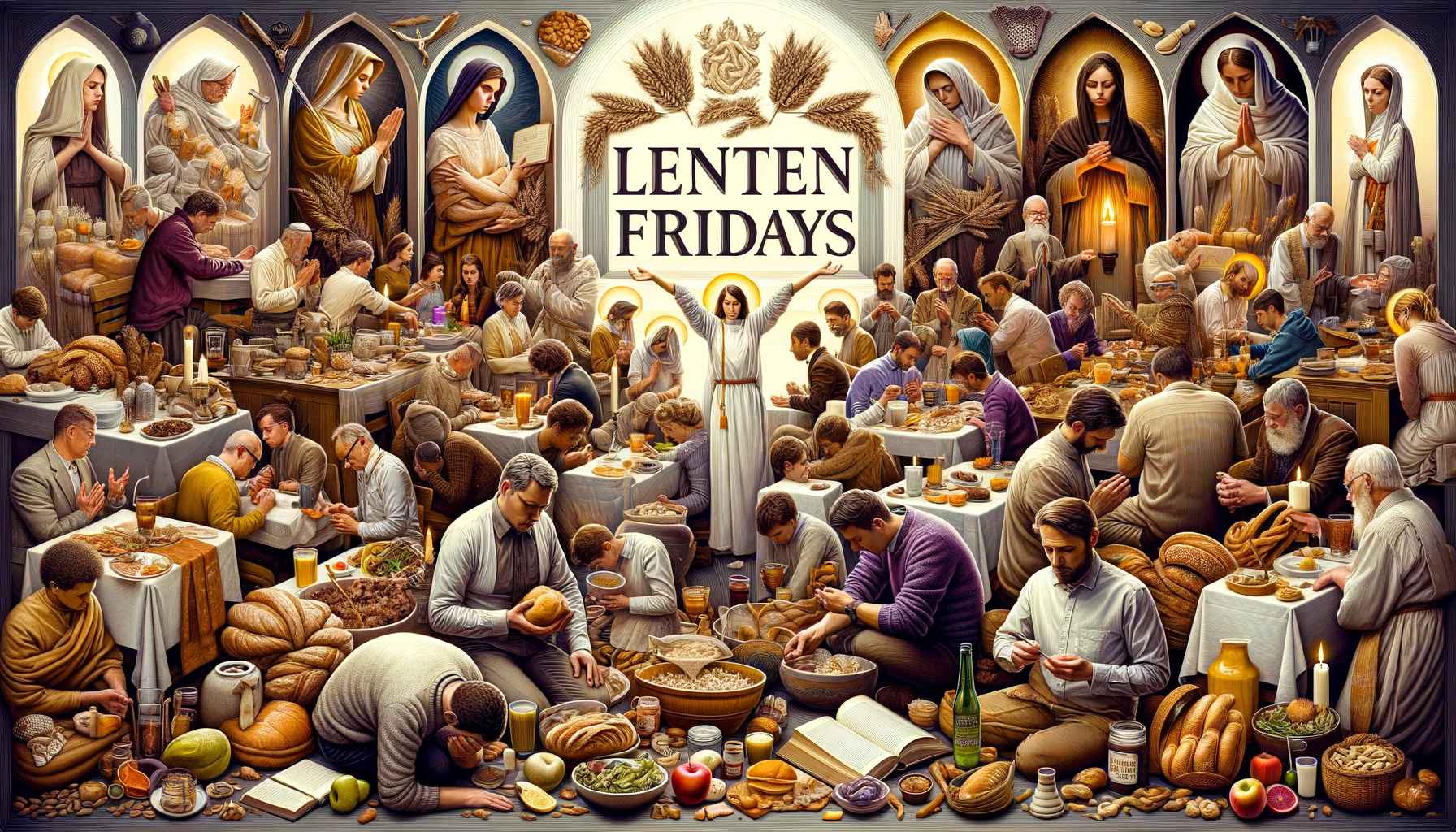Home>Christian Videos>Bible Stories>How Many Chapters In Each Of The Gospels


Bible Stories
How Many Chapters In Each Of The Gospels
Published: March 6, 2024
Ericka Andersen, an editor at Christian.net, expertly merges digital strategy with content creation, focusing on faith and societal issues. Her communication skills enhance the platform's engaging narratives, fostering meaningful dialogue on belief's impact on society.
Discover the number of chapters in each of the Gospels and delve into the captivating world of Bible stories. Uncover the rich narratives and teachings within the Gospels.
(Many of the links in this article redirect to a specific reviewed product. Your purchase of these products through affiliate links helps to generate commission for Christian.net, at no extra cost. Learn more)
Table of Contents
Introduction
Have you ever wondered how many chapters are in each of the Gospels? The Gospels, which are the first four books of the New Testament, are essential to the Christian faith as they contain the life, teachings, death, and resurrection of Jesus Christ. Each Gospel was written by a different author and provides a unique perspective on the life of Jesus. In this article, we will explore the chapter breakdown of each Gospel and compare the number of chapters in each, shedding light on the differences and similarities between them. Let's dive into the fascinating world of the Gospels and uncover the numerical distinctions within them.
Read more: How Many Chapters In Book Of Revelation
Chapter Breakdown of the Gospel of Matthew
The Gospel of Matthew, written by the apostle Matthew, consists of 28 chapters. Each chapter in the Gospel of Matthew provides a detailed account of the life, teachings, and miracles of Jesus Christ. The Gospel begins with the genealogy of Jesus, tracing his lineage back to Abraham, and then proceeds to narrate the birth of Jesus, his ministry, parables, and ultimately, his crucifixion and resurrection. The Gospel of Matthew is known for its emphasis on Jesus as the fulfillment of Old Testament prophecies, portraying him as the long-awaited Messiah. The chapters in the Gospel of Matthew are rich in content, providing a comprehensive portrayal of Jesus' life and teachings, making it a significant source of inspiration and guidance for Christians worldwide.
- Chapter 1-4: The genealogy and birth of Jesus, followed by the temptation of Jesus in the wilderness.
- Chapter 5-7: The Sermon on the Mount, which includes the Beatitudes and teachings on various aspects of Christian life.
- Chapter 8-10: Miracles performed by Jesus, including healing the sick and raising the dead, as well as the commissioning of the twelve apostles.
- Chapter 11-13: Jesus' teachings through parables, such as the parable of the sower and the parable of the mustard seed.
- Chapter 14-18: More miracles and teachings, including the feeding of the five thousand and the transfiguration of Jesus.
- Chapter 19-22: Teachings on marriage, the kingdom of heaven, and confrontations with religious leaders.
- Chapter 23-25: Jesus' denunciation of the scribes and Pharisees, as well as teachings on the end times and the coming of the Son of Man.
- Chapter 26-28: The betrayal, crucifixion, and resurrection of Jesus, concluding the Gospel of Matthew with the Great Commission.
The Gospel of Matthew's 28 chapters provide a comprehensive account of Jesus' life, teachings, and the fulfillment of Old Testament prophecies, making it a cornerstone of the Christian faith.
Chapter Breakdown of the Gospel of Mark
The Gospel of Mark, attributed to John Mark, contains 16 chapters, making it the shortest of the four Gospels. Despite its brevity, the Gospel of Mark is known for its fast-paced narrative and emphasis on the actions of Jesus. The Gospel begins with the ministry of John the Baptist and quickly moves to the baptism of Jesus, launching into a series of miracles, teachings, and encounters with various individuals. The Gospel of Mark is characterized by its vivid descriptions and the portrayal of Jesus as a powerful and compassionate figure. The chapters in the Gospel of Mark offer a succinct yet impactful portrayal of Jesus' ministry and the events leading to his crucifixion and resurrection.
- Chapter 1-4: The ministry of John the Baptist, the baptism and temptation of Jesus, and the beginning of Jesus' public ministry, including the calling of the first disciples.
- Chapter 5-8: Miracles performed by Jesus, such as the healing of the demon-possessed man and the feeding of the four thousand, along with teachings and parables.
- Chapter 9-12: The transfiguration of Jesus, teachings on various topics, and confrontations with religious leaders, including the Pharisees and the scribes.
- Chapter 13-16: Jesus' teachings on the end times, the Last Supper, his betrayal, crucifixion, and resurrection, concluding the Gospel of Mark with the Great Commission.
The Gospel of Mark's 16 chapters provide a concise yet powerful account of Jesus' ministry, emphasizing his actions and the profound impact he had on those around him. Despite its brevity, the Gospel of Mark remains a significant and influential part of the New Testament, offering a unique perspective on the life and teachings of Jesus Christ.
Chapter Breakdown of the Gospel of Luke
The Gospel of Luke, authored by the physician Luke, consists of 24 chapters, presenting a detailed and comprehensive account of the life and teachings of Jesus Christ. Luke's Gospel is known for its focus on compassion, social justice, and the inclusion of marginalized individuals, reflecting Jesus' ministry to the poor and the oppressed. The Gospel begins with the birth of John the Baptist and Jesus, followed by Jesus' early life, ministry, parables, and interactions with various individuals. The chapters in the Gospel of Luke offer a rich and diverse portrayal of Jesus' teachings and his mission to bring salvation to all people.
-
Chapter 1-4: The birth of John the Baptist, the annunciation of Jesus' birth to Mary, and the ministry of John the Baptist, culminating in the baptism of Jesus and the temptation in the wilderness.
-
Chapter 5-8: Miracles performed by Jesus, including the healing of the leper and the paralytic, as well as the calling of the first disciples and teachings on various aspects of faith and discipleship.
-
Chapter 9-12: The sending out of the twelve apostles, the feeding of the five thousand, teachings on prayer and the kingdom of God, and confrontations with religious leaders.
-
Chapter 13-16: Parables such as the Good Samaritan and the Prodigal Son, teachings on repentance and forgiveness, and Jesus' compassion for the marginalized and oppressed.
-
Chapter 17-20: Teachings on the coming of the kingdom of God, the nature of the Messiah, and confrontations with religious leaders, including the Pharisees and the scribes.
-
Chapter 21-24: Jesus' teachings on the end times, the Last Supper, his betrayal, crucifixion, and resurrection, concluding the Gospel of Luke with the appearances of Jesus to his disciples and the Great Commission.
The Gospel of Luke's 24 chapters provide a nuanced and compassionate portrayal of Jesus' ministry, emphasizing his concern for the marginalized and his mission to bring salvation to all people. Luke's Gospel remains a significant source of inspiration and guidance for Christians, highlighting the universal message of love and redemption brought by Jesus Christ.
Chapter Breakdown of the Gospel of John
The Gospel of John, attributed to the apostle John, contains 21 chapters, offering a profound and theological perspective on the life and teachings of Jesus Christ. John's Gospel is distinct from the synoptic Gospels (Matthew, Mark, and Luke) in its focus on the divinity of Jesus and the deeper spiritual truths underlying his ministry. The Gospel begins with the poetic prologue, highlighting the eternal nature of the Word (Logos) and the incarnation of Jesus as the light of the world. The chapters in the Gospel of John provide a rich and contemplative portrayal of Jesus' teachings, miracles, and his ultimate sacrifice for humanity.
- Chapter 1-4: The prologue, the testimony of John the Baptist, the calling of the first disciples, and the miracle at the wedding in Cana, where Jesus turns water into wine.
- Chapter 5-8: Jesus' healing of the paralytic, teachings on the bread of life, and the encounter with the woman caught in adultery, followed by the discourse on the light of the world.
- Chapter 9-12: The healing of the man born blind, teachings on the good shepherd, and the raising of Lazarus from the dead, leading to the plot to kill Jesus.
- Chapter 13-17: The Last Supper, Jesus' farewell discourse to his disciples, the prayer for unity, and the promise of the Holy Spirit.
- Chapter 18-21: The betrayal, crucifixion, and resurrection of Jesus, concluding the Gospel of John with the restoration of Peter and the commissioning of the disciples.
The Gospel of John's 21 chapters offer a profound and contemplative exploration of Jesus' divinity, his mission to bring salvation, and the eternal significance of his sacrificial love. John's Gospel continues to inspire and challenge readers to embrace the profound truths of Jesus' identity and the transformative power of faith in him.
Read more: How Many Verses Are In The Gospels
Comparing the Number of Chapters in Each Gospel
When comparing the number of chapters in each of the Gospels, it becomes evident that there are both similarities and differences in their structure and content. The Gospel of Matthew, with 28 chapters, stands as the longest of the four Gospels, providing a comprehensive account of Jesus' life, teachings, and the fulfillment of Old Testament prophecies. In contrast, the Gospel of Mark contains 16 chapters, making it the shortest Gospel, yet it delivers a powerful and succinct narrative of Jesus' ministry and the events leading to his crucifixion and resurrection. The Gospel of Luke, with 24 chapters, offers a detailed and compassionate portrayal of Jesus' ministry, emphasizing his concern for the marginalized and his mission to bring salvation to all people. Lastly, the Gospel of John, consisting of 21 chapters, presents a profound and theological perspective on the divinity of Jesus and the deeper spiritual truths underlying his ministry.
Despite the differences in the number of chapters, each Gospel contributes uniquely to the overall narrative of Jesus' life and teachings. The variations in chapter count reflect the diverse perspectives and emphases of the Gospel writers, providing readers with a multifaceted understanding of the significance of Jesus Christ within the Christian faith. While the number of chapters may differ, the Gospels collectively offer a rich tapestry of narratives, teachings, and miracles that continue to inspire and guide believers around the world.
Conclusion
In conclusion, the Gospels of Matthew, Mark, Luke, and John each offer a unique and valuable perspective on the life, teachings, and significance of Jesus Christ. The varying number of chapters in each Gospel reflects the diverse approaches taken by the authors to convey the message of the Christian faith. From the comprehensive portrayal of Jesus in Matthew to the succinct yet impactful narrative in Mark, the compassionate and inclusive lens of Luke, and the profound theological insights of John, each Gospel contributes to the rich tapestry of the New Testament. The differences in chapter count serve to highlight the multifaceted nature of Jesus' ministry and its enduring impact on the world. As readers engage with the Gospels, they are invited to explore the depth and breadth of Jesus' teachings and the transformative power of his life, death, and resurrection. The Gospels continue to serve as a source of inspiration, guidance, and spiritual nourishment for individuals and communities, transcending time and culture.














